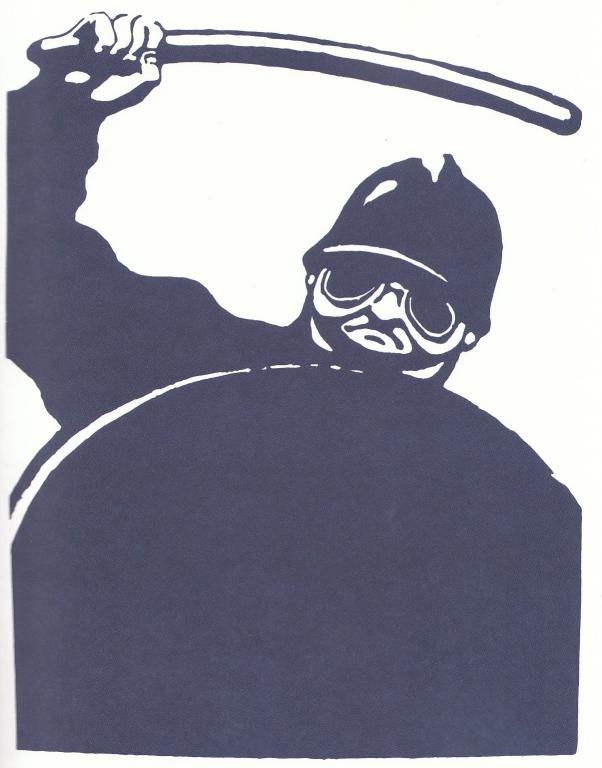As we watch countless White men pretend they’ve been marginalised, exploited and abused—we observe their stupid Tiki Touch parades, laughing as our pen hits the paper.

As long as stupid decisions have been made, there has been protest to those actions—likely starting with words, then probably rocks and eventually art. There is no better way of informing your oppressors that you are sick to the teeth of their ideologies than a 6-hour kitchen floor masterpiece, raised just above head height like a ‘Go feck yourself’ hair accessory.
Art in a modern protest is the mascot for it’s message; photographed and shared to reverberate a common feeling in the echo chamber of constricted social following. It matters not what the colour balance is, or whether you have any composition to your visual riot shield, because it’s the message that defines it as art, it’s existence as a product of passion giving way to it’s definition—hell, even memes can be protest art.
Your enemy and your opponent will not see your artwork and be thrust into your way of thinking, it’s not designed to change the mind of those who it attacks—protest art rallies those who seek solace in it’s message, sending ink based vibes reverberating around it’s environment. Punny, funny or serious; it reinforces that you share the same message with those in your picket, uplifting those in your community.
Let us leap into the past shall we? Europe, mid-century you say? Pooooof!
Paris 1968, pent up anger from a conservative government, the Vietnam war, poverty and unemployment forced students to their barracks, their barracks being drafts tables, silk screens and canvases—spawning art the reflected the frustration bouncing around the Parisian street, artworks to rattle off from the bricks of which they lay, not artworks to hang on the walls of the bourgeois that stand upon the downtrodden of the city.


Lampposts, railings, walls and windows—burning with bold imagery of a hatred for the establishment, a red fist rising above a factory as a blacked out officer raises his bludgeon to strike you; you will not be hit by 12″ of dense timber but instead the ideology of your peers, their passions and their fear. You are now the community, that is the power of protest art.
From where posters leave, fine art can pick up; with almost all famous pieces of art being a reaction to something, often a protest to a person, a way of life or of an event. Poignantly, there is a painting that I love dearly, spanning metres in height and width. Picasso’s Guernica is a monochrome wonder of enormity, painted through anger and empathy for the bombing of such named city. In my eyes this is Picasso’s masterpiece and I don’t want to show you it here, I think it’s more powerful if I describe it to you.
Pushed into a harsh landscape crop, the dark hues of black and white align with harsh shapes that vaguely take forms as steps, doors and walls. The scene is defining a suburban interior, though ripped and twisted; a light hangs from the ceiling but still a hand holds a candle to the chaos—this candle illuminating pictures upon the wall, the human touch of this household scene. Where you except to see people you see animals, spurred into the air in the madness and clatter of it’s bombing, a half torso screaming for release by the window, trapped under constricting shapes.
Human forms look rushed and misshapen, mouths shriek as they run to exist, others vulnerably stare at the top of the image. Despite being enormous, every shape feels pressed against the next, pushed and pressed together by the destruction and collapse of the bombing. The protest is the inhumanity in the bombing, how people become less than human as their very existence is destroyed.
The painting and poster are leagues apart in commercial value, but in the value of protest, they draw equal.

Whether it’s a sharpie scribble on a cardboard placard, or meters of oil paint—it’s purpose is in the message it screams in the face of it’s oppressor rather than it’s visual discourse. We all love protest art because we see our own ideologies reflected back at us, or we can share them with the world by raising our words into a non-human space, an arms reach above the crowd. Many artworks are created through a love for something, but protest art is a pure art form as it merely exists through anger, through fear, through protest.
Grab your brushes as they grab their pitchforks, the smart fight with knowledge but the confused fight with fists.
